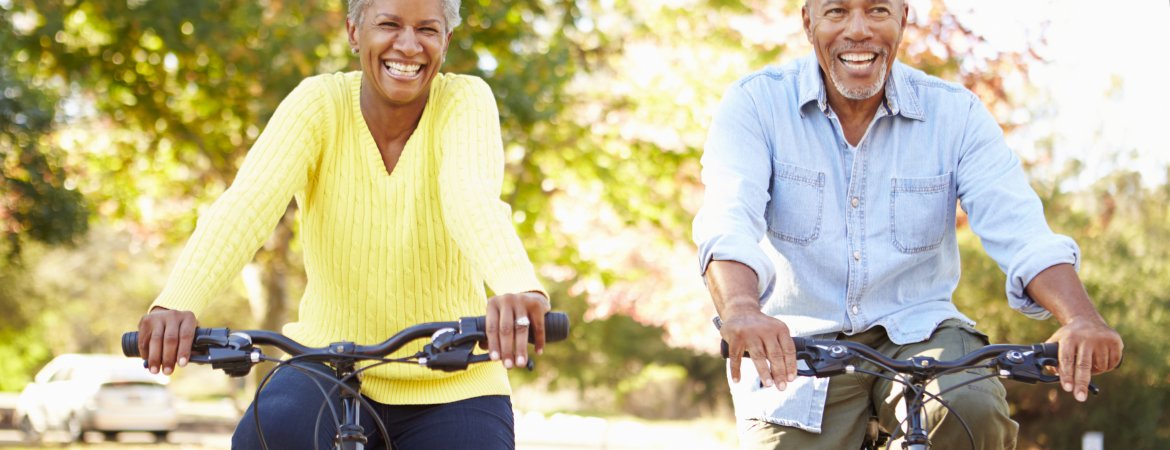
Staying fit as you get older
The alarm goes off and you groan and hit the snooze button. Again. That was your third time missing a workout this week but it’s just so… hard to get up while the bed is so soft and comforting.
Tomorrow, you tell yourself, tomorrow, you will definitely go to the gym. Or at least for a walk.
We get it.
It’s a mission to make time for exercise when you’re older, have more responsibilities, and are just generally tired – a lot! That’s what happens when you’re juggling family and career duties.
Exercise tends to take a back seat, but it absolutely should not.
The conundrum is that as we get older, we feel less inclined to exercise – but exercise is what helps to keep us young, vital and healthy.
Staying fit means that you can maintain your independence for as long as possible. You will prolong your ability to go about your daily activities without needing much assistance, preserving your self-sufficiency and long-term quality of life.
Here are some other really good reasons to make the commitment to staying fit as you get older.
Heart health
Regular exercise isn't just about looking good in clothes, it's about keeping your body strong and resilient as you age. Whether it's going for a brisk walk, lifting weights or practising yoga, staying active offers a plethora of benefits for your overall health.
For starters, exercise is like a tune-up for your heart. It helps keep your cardiovascular system in tip-top shape, reducing the risk of heart disease and other chronic conditions. Plus, activities like walking or jogging can also help maintain bone density, lowering your risk of osteoporosis and fractures.
But that's not all – exercise also works wonders for your muscles and joints. Strength training helps keep your muscles strong, preventing age-related muscle loss (known as sarcopenia). And stretching exercises, like those found in yoga or Pilates, improve flexibility and joint mobility, reducing the risk of injury and enhancing your ability to tackle daily activities with ease.
So, whether you're hitting the gym or just taking a few minutes to stretch each day, investing in regular exercise pays off in spades. You will feel great and stay healthy for years to come.
Preventing falls
As we get older, it's common for our balance and co-ordination to not be as sharp as they used to be. This can make us more prone to stumbling or falling, which can lead to serious injuries like fractures. However, there are simple exercises we can do to help improve our stability and lower the chances of taking a tumble.
For instance, activities like standing on one leg, walking in a straight-line heel-to-toe, or even trying out something like tai chi can work wonders. These exercises not only help us get a better sense of our body's position in space (which is called proprioception), but they also strengthen the muscles around our joints that help keep us steady. By doing these exercises regularly, we can significantly boost our balance and reduce the risk of falls, ultimately helping us stay safe and active as we age.
Weight management
First, it’s just a kilo. A month later, the scale shows you’re five kilograms up from your weight. What’s changed? Your metabolism is the answer. As metabolism tends to slow down with age, staying active can help manage weight and prevent obesity, which is linked to numerous health issues, including diabetes, hypertension and joint problems.
Exercise can improve insulin sensitivity, making it easier for cells to take up glucose from the bloodstream. This can go a long way in preventing or managing Type 2 diabetes, a condition that becomes more common with age and is closely linked to obesity.
Try these exercises at home:
- Step forward with one leg, lowering your body until both knees are bent at a 90-degree angle, then push back up and step forward with the opposite leg. Alternate legs as you walk forward. Aim for 10-12 lunges on each leg.
- Start in a push-up position with your hands directly under your shoulders, engage your core and hold your body in a straight line from head to heels. Hold the position for 20-30 seconds, gradually increasing the time as you get stronger.
- Sit on the edge of a sturdy chair or bench, place your hands shoulder-width apart on either side of your hips, and slide your bottom off the edge of the chair. Lower your body by bending your elbows until your upper arms are parallel to the floor, then push back up to the starting position. Aim for 10-15 repetitions.
- Stand with your back against a wall and lower your body into a seated position, as if you were sitting in an imaginary chair. Hold the position for 30-60 seconds. Keep your back against the wall and your thighs parallel to the floor.
Remember to warm up before starting your workout and cool down afterwards. Listen to your body and modify exercises as needed to suit your fitness level. And always check with your doctor first before starting any new exercise programme, especially if you have any pre-existing health conditions or you’re on specific medication.
Disclaimer
This article is for informational purposes only. Always check with your doctor or medical practitioner about any health concerns, before embarking on any fitness or nutrition programme, or using any medication.
